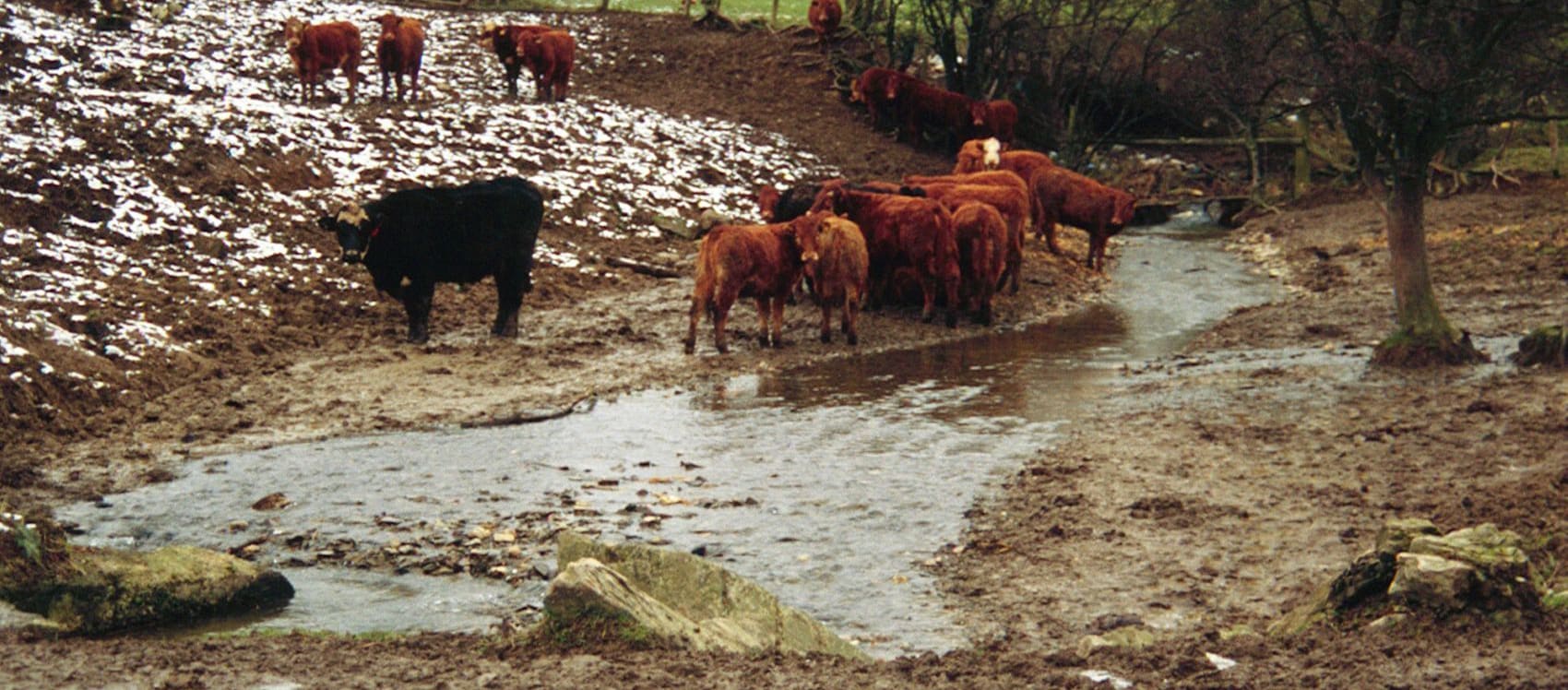
For many fish species, the smaller rivers and streams of a catchment are vital for spawning and juvenile habitat. The state of the tributaries and the quality of the water flowing out of them also has a direct influence on the flora and fauna that inhabit the main river.
A pristine Wye or Usk stream is usually bounded by a mixture of grasses and trees.
Provided there isn’t complete tree shade, each spring and summer there is a growth of bankside vegetation which effectively narrows the stream. This tends to maintain its depth and speed of flow.
Each winter, this is reversed as flows increase in intensity. The summer growth is knocked back and stream width adjusts to the prevailing flow, only to reverse and narrow again during the growing season.
Add extremes of grazing, shading or even ploughing and the equilibrium is broken: no summer growth to restore original width.
The net effect is that streams become wider and shallower. Silt settles and the gravels become less suitable for fish spawning while also supporting fewer and less diverse invertebrates. Speed of flow and depth (optimum approx. 12cms per second and 30cms deep) is especially critical for juvenile salmon and so the area of fish production is significantly reduced.
When we started our first surveys in the late 1990s, we found just one Wye tributary that had bucked the trend in the overall decline in fish numbers. Inspection showed that it conformed to the ideal in terms of habitat – very little grazing and tree cover that allowed some light in. This was the Dernol in the upper catchment.
Before the inception of the Common Agricultural Policy (CAP), overgrazing and damage to river habitats was relatively rare. Since CAP, there has been an inexorable rise in the number of grazing animals and intensity of arable farming.
The increase in grazing has included riparian vegetation; intensive arable farming often sees ploughing almost to the water’s edge and pastures are replaced with crops.
Adding to our problem is that there was an historic but now discontinued practice of rotational coppicing for the alder wood itself and latterly, in the ‘60s and ‘70s, this continued in the belief that it would reduce flooding. This practice produces multi-stemmed trees that are prone to toppling and being ripped out of the bank during floods.
Small wonder then that in the heavily grazed Wye and Usk catchments we spend a lot of time and money restoring and protecting the riparian zone of our tributaries.
Share this page
The Wye and Usk Foundation
The Right Bank, The Square
Talgarth
Brecon
LD3 0BW
The Wye & Usk Foundation is a charity registered in England and Wales (no. 1080319).